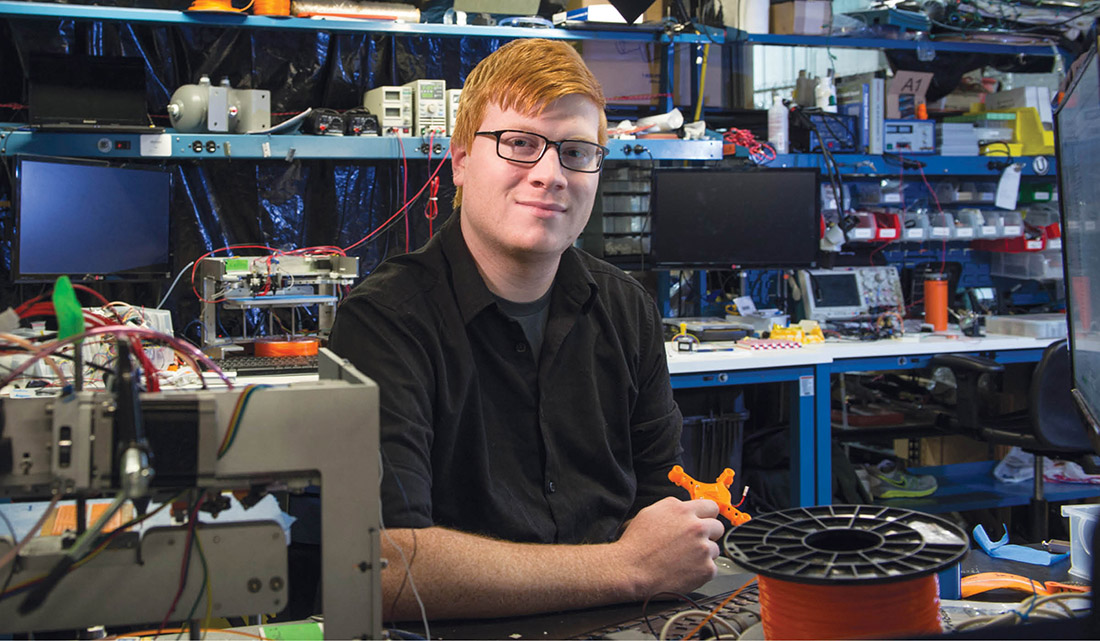
Jack Minardi’s work represents a huge step in a technology known for making giant leaps. Minardi, BE’12, is co-founder and software engineering lead for Voxel8, developer of a custom-electronics-producing 3-D printer that is a darling of tech media, attracting attention from Wired and Popular Mechanics. Fast Company named it one of The 9 Best Ideas from the 2015 Consumer Electronics Show.
Jennifer Lewis, the Harvard engineering professor who invented the 3-D electronics printer, recently summed up all the buzz. In the past, 3-D users could get anything they wanted, she told Wired, “as long as it’s made of plastic.” Her printer uses silver ink to print electronic components inside the plastic. It produces entire, working pieces in one run.
Minardi’s work has been crucial to advancing this technology, Lewis said. “He had the expertise in software engineering that my research group at Harvard sorely lacked.”
Although Minardi was an electrical engineering major at Vanderbilt, he took lots of programming classes—both required and not—and found himself designing “little throwaway utilities” just for fun.
After graduation he accepted a job with Enthough Scientific Computing Solutions in Austin, Texas, working on a team that designed software for a scanning electron microscope. While on vacation he visited a friend who was a Ph.D. candidate working in the Lewis Lab at Harvard and was surprised to see the software being used. Minardi emailed Lewis and offered to help. She hired him as a postgraduate research fellow at Harvard.
He was accepted to a Vanderbilt School of Engineering Ph.D. program starting in the fall of 2014, but by the end of summer, it was clear to Minardi that Voxel8 would be big. He agreed to defer his Ph.D. studies and come along as Voxel8’s co-founder, moving to the company’s space at Greentown, an office and lab building in suburban Boston.
The key to Voxel8 is a paste with silver particles that comes out in the consistency of peanut butter but dries like any other metal component. The plastic and silver nozzles alternate their work, sliding out of the way and cleaning themselves on brushes when not in use.
Already, Voxel8’s printer can make a working four-propeller drone. Future applications will include custom hearing aids printed with the electronics already inside, plus other wearables such as Fitbit-style pieces customized with the look and features users want—GPS, steps and Wi-Fi, among others.
Right now, the technology can create circuit integrated chips down to the 800 micron pitch—or pin-to-pin distance—which are common in many components. That allows for custom circuit boards made in 30 minutes instead of days, and they’re less expensive.
“Beyond that—and what people need to wrap their minds around—is that we can do embedded electronics inside any form, which is not possible with any manufacturing technique today,” says Minardi.
The company is set to start shipping printers at the end of the year, with standard models selling for $9,000.
—HEIDI HALL